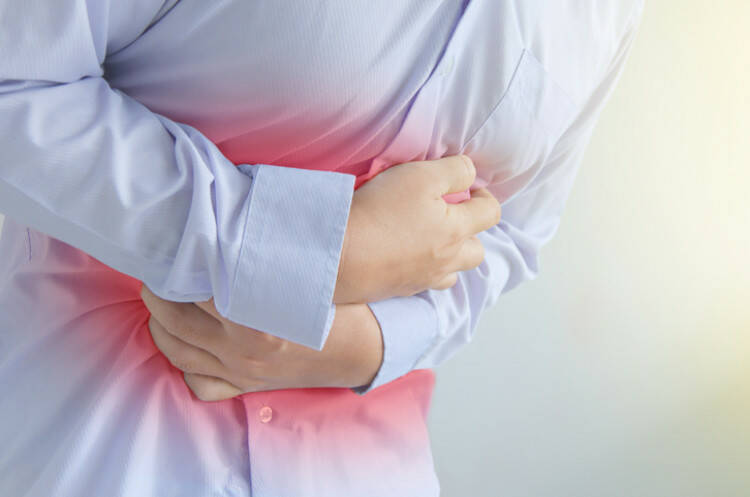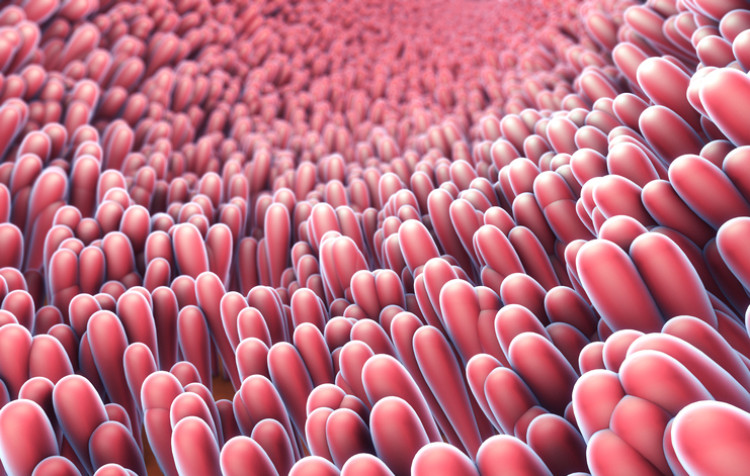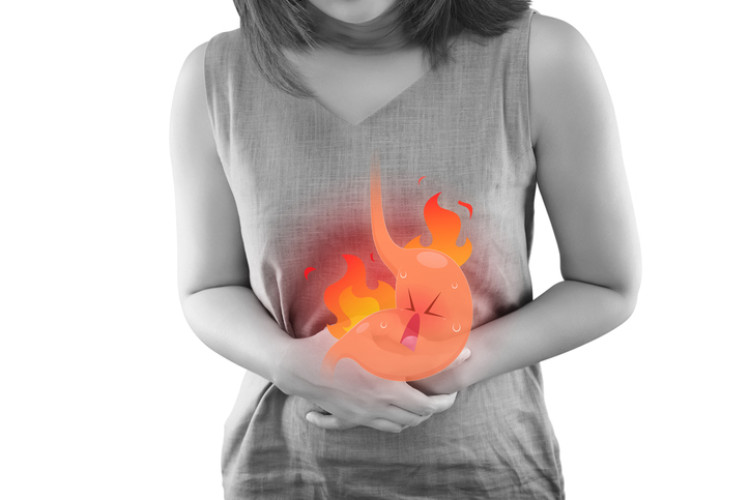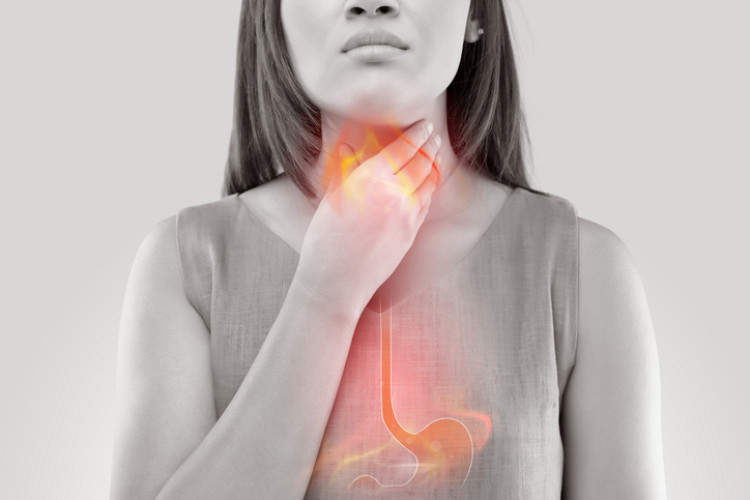What diet and foods are suitable for stomach ulcers?

Stomach ulcers hurt, cause nausea or heartburn. They are dangerous if they burst, when they threaten the patient with bleeding. They occur when the stomach lining is damaged. How does this happen and what is the prevention? Spring, but also autumn is their season.
Article content
Their formation is preceded by superficial damage to the stomach (erosion), with the ulcer itself affecting deeper structures. They are characterised by their propensity for spontaneous healing and frequent recurrence.
They occur mainly during spring and autumn.
They can present with serious complications.
They affect men 3 times more often than women.
The cause is multifactorial, so treatment and diet for pressure ulcers must be rational.
How does an ulcer form?

The lining of the stomach is made up of cylindrical epithelium arranged in cilia, and tubular glands arise on its surface. These produce gastric juices and mucus (mucin), which coats the inner wall, thus having a protective function.
The gastric juice contains mainly water (almost 99 %), salts, ions, hydrochloric acid (HCl), pepsin, gastrin, chymosin and lipase. Together it forms a colourless to yellowish liquid with a very acidic pH. About 1,5 to 2 litres of this juice is normally produced per day.
The stomach is the site that comes into direct contact with these juices physiologically. Their function is to protect the stomach, destroy pathogens and break down food.
However, through various pathological processes or chemically (diet, drugs), the production of gastric juices increases (hyperacidity) and has a destructive effect on the stomach.
The first phase - inflammatory process
Inflammation of the stomach wall (gastritis) occurs as a result of the prolonged and repeated action of various pathological influences on the stomach wall. It is manifested by increased blood flow, looseness, redness and swelling (oedema) with mucous covering. Gastritis is manifested mainly by pain in the stomach area.
The risk factors are primarily smoking and alcohol. Various drugs also have an irritating effect (antibiotics, non-steroidal antiphlogistic drugs, acetylsalicylic acid, etc.). We must not forget the unhealthy irritating diet. The effect of these factors is compounded by the general weakening of the organism, for example, due to illness or stressful situations.
Second phase - acute erosive process
If the risk factors are not eliminated, the gastritis worsens, damaging the cells of the gastric mucosa locally (erosion) with the possibility of slight bleeding. The damage is still superficial, not affecting deeper structures. This is when the gastritis is acute erosive gastritis. These inflammations are not purulent. The inflammatory infiltrate they produce can damage the gastric glands and lead to the transformation of cellular structures into smooth ones. This transformation is the target in the development of a gastric tumour.
Stage three - gastric ulcer
Through the progression of the erosive process, the deeper parts are gradually damaged, resulting in a gastric ulcer. It is about 1 cm in diameter and round in shape.
It affects not only the surface of the mucosa but also reaches the submucosa. When a blood vessel is eroded, it ruptures (bursts), which is often the cause of fatal haemorrhage. Outwardly, it is manifested by massive vomiting of fresh blood and severe pain.
How does a stomach ulcer manifest itself?
Pain is the first symptom, followed by nausea or vomiting. However, the symptoms vary according to the stage at which the ulcer is located.
Pain in the epigastrium
Pain in the epigastric area is most often associated with eating. It occurs immediately after eating and disappears when the stomach is emptied.
If the pain is persistent, it may indicate penetration of the ulcer into an adjacent organ, such as the pancreas (typically radiating into the back), or other diseases.
This is due to increased secretion of gastric juices, which, in addition to breaking down food, have a destructive effect on the mucosa itself.

The pain is in the stomach area, more specifically in the upper abdomen in the middle, just below the sternum. It may radiate towards the chest to the higher parts or even to the back.
When they radiate into the chest, they resemble chest pains in acute heart attacks. They are usually crampy or burning in nature, or cause severe pressure.
GERD and heartburn
Excess juice causes reflux into the higher parts of the gastrointestinal tract (digestive tract). It travels upwards across the sphincter between the stomach and pharynx and into the pharynx itself (regurgitation), resulting in heartburn.
Heartburn = pyrosis.

Gastroesophageal reflux (or even GERD) is uncomfortable. Over time, the pharynx can also be to blame in the case of inflammatory processes.
If these symptoms are recurrent and associated with vomiting of strongly acidic gastric juice with food residues from the previous day, we call it pylorostenosis (disease of the sphincter above the stomach).
This sometimes completely changes the clinical picture typical of an ulcer. It is manifested by persistent stomach heaviness, vomiting of juices and food debris and debilitates the patient. The patient is weak, has no appetite, wastes away and loses weight.
Nausea and vomiting
Another symptom is a feeling of nausea or vomiting.
Initially, the patient vomits stomach contents, later only colourless watery contents, possibly coloured yellow.

In case of an erosive process on the stomach and ulcer disease, a small amount of blood may be present in the vomit.
The presence of blood or even coagula (presence of blood clots) is an indicator of increased attention. In many patients, it is also a reason to seek medical attention, which becomes a necessity.
Blood signals us the presence of already formed ulcers. In this case, prevention is pointless and treatment begins.
Vomiting blood, hematemesis
The most serious complication or consequence is the perforation of the ulcer. It is the impaction of a blood vessel with subsequent bleeding into the stomach.
It is manifested externally by massive vomiting of fresh blood (haematemesis). This is associated with severe pain in the epigastrium.

The presence of blood in the stool is manifested by black stools.
If the patient does not get to a medical facility in time, he may go into haemorrhagic shock (from blood loss). Haemorrhagic shock can be fatal.
Excessive blood loss manifests itself in general weakness, fatigue, drowsiness, drowsiness, feeling faint. Blood pressure drops significantly, which can also cause collapse and subsequent unconsciousness.
Just before collapse, disorientation from lack of blood supply and oxygenation to the brain is common. Heart rate increases, as does respiratory rate. The patient's skin is markedly pale and cold to the touch with sticky sweat.
What is the diet in gastric ulcers and what is absolutely inappropriate?
A gastric ulcer is a disease of the stomach or its lining. In most cases, it heals spontaneously.
However, various types of drugs, substances and food can have an irritating effect and promote this pathological process or even be the cause of the ulcer. Conversely, there are drugs that help in the treatment of ulcer disease. Similarly, certain foods have a beneficial effect on the stomach lining.
Drinks to avoid
Certain drinks, like food or medicines, can irritate the stomach lining by their composition. The irritated stomach lining becomes inflamed, and an ulcer develops.

Alcoholic beverages
Alcohol is undoubtedly the most damaging of all. As well as causing mental and behavioural disturbances, its effect is also biological. It has a direct effect on tissues and causes damage to them. It affects metabolism, plays a significant role in the development of diabetes, and damages the central nervous system, the heart or the kidneys.
The most well-known gastrointestinal diseases it directly causes are liver cirrhosis, pancreatitis, gastroesophageal reflux, oesophageal varices, alcoholic gastritis, gastric ulcers and stomach cancer.
The resulting ulcer deepens and hastens its rupture with subsequent bleeding, which is increased by the dilation (dilatation) of blood vessels, also an effect of alcohol.
Coffee
In today's stressful world, some of us can't function without it. Besides giving us a "kick" in the morning, it has its negatives.
Drinking coffee in large quantities is addictive. It is even classified as a mild drug. It is said to play a significant role in the development of cancer. It has a diuretic effect on the kidneys, making it directly responsible for dehydration. It causes tachycardia (speeding up the heart).
In pregnant women - like alcohol - it can be a trigger for miscarriage.
Digestion is affected by increased secretion of gastric juices, hyperacidity of the stomach with subsequent gastritis and ulcer formation. Hyperacidity also impairs the treatment of the ulcer formed, or is directly involved in the development of ulcer complications. It also reduces the resistance of the sphincter over the stomach, causing gastroesophageal reflux and heartburn.
Energy drinks
Energy drinks have similar effects to coffee. They also contain caffeine and, in addition, a number of other substances that adversely affect several organs. They cause tachycardia, arrhythmia and, in combination with alcohol, can be fatal. They constrict the heart vessels, causing ischaemia and chest pain.
Insomnia, fatigue and headaches are common.
They are also irritating to the gastrointestinal tract, causing gastroesophageal reflux, gastritis and ulceration. In addition, they are bubbly, thus multiplying their irritating effect.
Sparkling beverages
Bubbly drinks are not dangerous in themselves. The carbon dioxide they contain is normally expelled. They can cause increased secretion of gastric juices and should therefore only be avoided by people with existing ulcers to improve the course of the disease.
If they are sweetened, it is better to reach for those that are lower in sugars.
The stomach is affected not only by the chemical composition of the drinks, but also by physical influences such as temperature. There is a higher risk of complications with stomach ulcers if the drinks consumed are too hot (tea, soup, hot chocolate) or cold (ice cream, drinks with ice cubes).
The beneficial effect of pure water
For humans, water is essential for life. Drinking water is obtained by distillation. It has a balanced amount of minerals and is free of impurities. Drinking water that is not sweetened or sparkling is therefore the best choice. It hydrates and does not irritate the stomach. Adequate water intake is recommended for almost all diseases.

Unsuitable foods
Several foods act as stimulants of gastric juice production. In the case of gastric ulcers, fatty and fried foods should be avoided in the first place.
Among meat products, red meat and pork, bacon, crackling, sausage, smoked meat and any meat fried in oil are most inappropriate.
Excessive seasoning of food with salt should also be avoided, especially spices. Spicy foods irritate the stomach and are a trigger for pain. Those who like spicy specialities with chillies and other spices will have the greatest difficulty in giving up their favourite foods.
White pastries and yeast dough are also bad for you. You should therefore avoid large quantities of pastries, yeast cakes, grandma's buns and other goodies such as pizza. Some types of citrus fruits are also dangerous.

Dietary foods that say goodbye to ulcers
A diet for ulcers should be rational (sensible) and sparing at the same time. By this we mean foods that do not irritate, do not burden the stomach and contain plenty of vitamins and minerals. Undoubtedly, this includes fruit and vegetables.
Among the vegetables that help in the treatment of ulcers is broccoli. It is high in vitamin C, but also in other vitamins such as vitamins B and E and provitamin A. It is a source of iron and folic acid, as well as calcium, sulphur, zinc and phosphorus. The beta-carotene found in it acts as an antioxidant. It is also known for its anti-cancer effects due to isothiocinate and glucoraphamine.
It has been shown in various tests to kill Helycobacter pylori, which is key in the development of stomach ulcers when antibiotics are no longer effective. Care should be taken when eating raw broccoli as it also contains high levels of sulphur, which evaporates with cooking.
Capsicum is also very good due to its high amount of vitamins such as A, B, C, E, K, iron and folic acid.
It can also be consumed for cancer prevention. It also contains carotenoids, magnesium, calcium, high amounts of fibre which aids in digestion, fat-burning capsaicin and is involved in cholesterol metabolism. Potassium in turn helps in water management.
Spinach is a source of vitamins A, B6, E, K, iron, calcium, magnesium, folic acid, L-ascorbic acid, cobalamin, flavonoids with antioxidant effects. It also has anti-carcinogenic effects and is a good aid in the fight against ulcers.
It is also beneficial for the heart and blood vessels.
Cabbage contains a huge amount of vitamin C, also vitamins B, E and K, selenium, potassium, iron, zinc, calcium, beta-carotene. The fermentation process also produces vitamin B12. It also contains a high amount of fibre, which maintains a healthy intestinal microflora and favourably affects digestion, prevents stomach ulcers and fresh cabbage juice is used for heartburn.
Celery can be considered as a source of B-complex. It contains all the vitamins in this category, in balanced amounts. Its leaves are a source of vitamin C. It also contains vitamins A, E and K. Among the minerals are iron, zinc, potassium, magnesium, chromium, sodium, calcium and iodine. Among its most important effects on digestion, it lowers cholesterol levels. It helps with constipation, reduces the risk of stomach ulcers and stomach cancer.
Reduces cravings for sweet and fatty foods.
Carrots are characterized by their content of vitamins A, B, C, D, E, iron, calcium and potassium. It aids in fat metabolism, thus helping in the accumulation of fat in the liver. It detoxifies, removes excessive bile, thus aiding in proper digestion.
It has anti-inflammatory and anti-cancer effects.
Potato or also eggplant potato is a plant containing vitamin B1, B2, B3, B5, B6, B9, C, K and PP. Among the minerals, it is iron, potassium, zinc, sodium, manganese, phosphorus and calcium. Potatoes positively affect digestion because of the high content of vitamin C and carbohydrates, which make us satiated.
Potato juice is used for gastritis, but also for liver disease.
The exotic avocado contains more potassium than the banana. In addition, it contains iron, folic acid, zinc, manganese, copper, phosphorus, thiamin, riboflavin, niacin and vitamins of groups A, B, C, E, K. It has anti-inflammatory properties due to its high content of unsaturated fatty acids. It is a source of fibre and antioxidants.
It is known for its anti-inflammatory effects and its role in fat metabolism.
Grapes have anti-inflammatory, detoxifying and anti-acidifying effects. This is due to their flavonoid content. A single berry contains up to 80 % water, vitamins B6, C and E. Of the minerals, it contains iron, magnesium, calcium, sodium, copper, manganese and phosphorus. It has a high carbohydrate, fibre and protein content.
It lowers cholesterol, restores cell structure and aids digestion.
Apricots are a great source of beta-carotene, vitamins A, B1, B2, B6, C and K. They contain a lot of potassium and phosphorus, also magnesium and calcium. Other minerals are present in apricot in smaller amounts.
They regenerate the cells. They have a beneficial effect on the mucous membranes, especially of smokers, and help with digestion.
Apples should also be mentioned. They disinfect the oral cavity, help with cholesterol metabolism, rid the body of toxins thanks to malic acid, help treat liver and gallbladder diseases, regulate stomach acidity. They are used mainly in young children in the treatment of gastric and intestinal catarrh. They have an irreplaceable place in the prevention and treatment of stomach ulcers.
They contain vitamins A, B, C, E, K, folic acid and, to a lesser extent, pantothenic acid. Of the minerals, potassium, phosphorus, magnesium and sodium predominate in apples.
Regular consumption of peaches cleanses the body of toxins. They have a detoxifying and laxative effect, thereby cleansing the digestive tract. They help to prevent the development of ulcer disease and promote weight loss. This effect is due to the high levels of potassium, magnesium, selenium, zinc and fibre. Of the vitamins, vitamin A and C predominate.
They also contain large amounts of antioxidants, which prevent the spread of cancer.
The banana is the least irritating to the stomach lining. It also aids digestion by absorbing excess water in the intestines. If you have ulcers and are a smoker, this is the fruit that will help alleviate any withdrawal symptoms.
It is a source of folic acid, pantothenic acid, niacin, vitamins A, B, C, E, K.
Blueberries strengthen immunity, detoxify, regulate blood sugar, have anti-inflammatory properties, relieve vomiting, not only in ulcers. They contain vitamin A, B, C, E, K, iron, calcium, sodium, zinc, selenium, manganese, magnesium, potassium, phosphorus and folic and pantothenic acid.
Wholemeal bread should be preferred to white bread, or older harder breads, in the case of ulcer disease. Only lean meat should be chosen from meat products and care should be taken in the preparation. Eggs are also good. The aforementioned banana or cottage cheese also has a soothing effect on the stomach lining. The best liquids are water or a weak decoction of calendula or chamomile tea.
The influence of aloe vera and colostrum has also proved positive.










